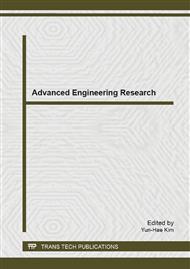[1]
Fisher, M. L., and Ittner, C. D. The impact of product Variety on Automobile Assembly Operations: Empirical Evidence and simulation [J] . Manage. Sci, 1999, 45(6): 771-786.
DOI: 10.1287/mnsc.45.6.771
Google Scholar
[2]
Fisher, M. L. What is Right Supply Chain for Your Product? [J]. Harvard Bus. Rev, 1997, 75(2): 105-116.
Google Scholar
[3]
Hau L. Lee. Agligning Supply Chain Strategies with Product Uncertainties[J] . California Management Review, 2002-44(3): 105-119.
DOI: 10.2307/41166135
Google Scholar
[4]
Liu gang. Supply Chain Design Based on the characteristics of supply of the product[J]. Gansu social sciences,2003, (6): 66-69.
Google Scholar
[5]
JI Xue Hong, Sun Dao Yin. A Study on the Impact of Matching Product and Supply Chain upon Business Performance [J]. Industrial Engineering and Management, 2011, 16(1): 12-16.
Google Scholar
[6]
Jiao, J.X., Xu, Q., Wu, Z., Ng, N. Coordinating product, process, and supply chain decisions: A constraint satisfaction approach[J]. Engineering Applications of Artificial Intelligence, 2009, 22(7): 992-1004.
DOI: 10.1016/j.engappai.2009.02.002
Google Scholar
[7]
Margherita Pero, Nizar Abdelkafi, Andrea Sianesi and Thorsten Blecker. A framework for the alignment of new product development and supply chains[J]. Supply Chain Management: An International Journal, 2010-15(2): 115–128.
DOI: 10.1108/13598541011028723
Google Scholar
[8]
Baud-Lavigne, B., Agard, B., Penz, B. Mutual impacts of product standardization and supply chain design[J]. Int.J. Production Economics, 2012, 135(1): 50-60.
DOI: 10.1016/j.ijpe.2010.09.024
Google Scholar
[9]
Euthemia Stavrulaki and Mark Davis. Aligning products with supply chain processes and strategy. The International Journal of Logistics Management, 2010-21(1): 127-151.
DOI: 10.1108/09574091011042214
Google Scholar
[10]
Sebastian K. Fixson. Product architecture assessment: a tool to link product, process, and supply chain design decisions[J]. Journal of Operations Management, 2005(23): 345–369.
DOI: 10.1016/j.jom.2004.08.006
Google Scholar
[11]
Lamothe, J., Hadj-Hamou, K., Aldanondo, M. An optimization model for selecting a product family and designing its supply chain[J]. European Journal of Operational Research, 2006, 169(3): 1030-1047.
DOI: 10.1016/j.ejor.2005.02.007
Google Scholar
[12]
Elmaraghy, H.A., Mahmoudi, N. Concurrent design of product modules and global supply chain configurations[J]. International Journal of Computer Integrated Manufacturing, 2009, 22(6): 483-493.
DOI: 10.1080/09511920802389553
Google Scholar
[13]
Nepal, B., Monplaisir, L., Fauyiwa, O. Matching product architecture with supply chain design[J]. European Journal of Operational Research, 2012, 216: 312-325.
DOI: 10.1016/j.ejor.2011.07.041
Google Scholar
[14]
Zhang, X., Huang, G.Q., Humphreys, P.K., Botta-Genoulaz, V. Simultaneous configuration of platform products and manufacturing supply chains: comparative investigation into impacts of different supply chain coordination schemes[J]. Production Planning & Control, 2010, 21(6): 609-627.
DOI: 10.1080/09537287.2010.489271
Google Scholar
[15]
Thiam-Soon Gan and Martin Grunow. Concurrent Product Supply Chain Design: A Conceptual Framework & Literature Review[C]. Procedia CIRP 7, 2013: 91 – 96.
DOI: 10.1016/j.procir.2013.05.016
Google Scholar
[16]
Bin Dan, Tao Feng. Product Family Model and Its Configuration Based on GBOM [J] . Journal of Management , 2005, 2(4): 422-425.
Google Scholar


